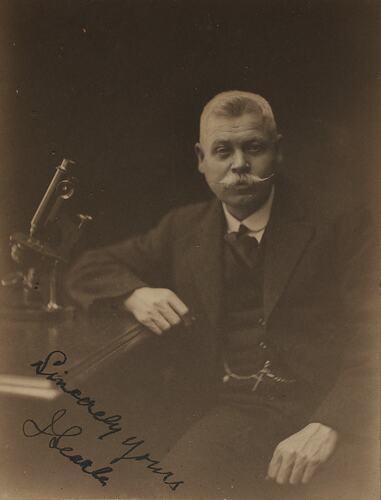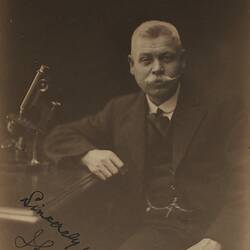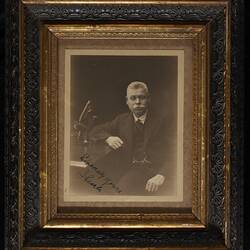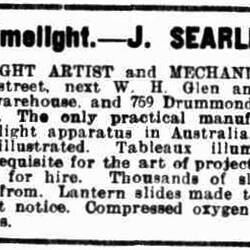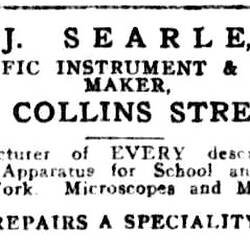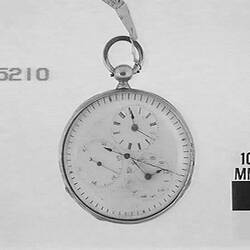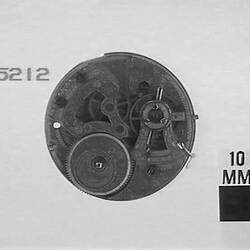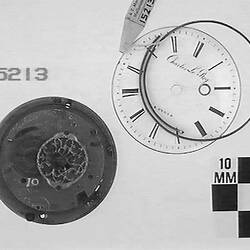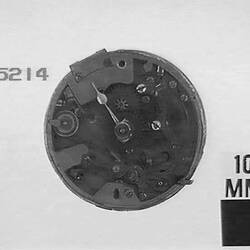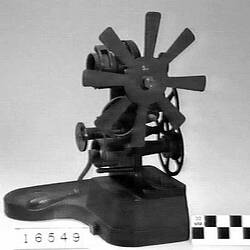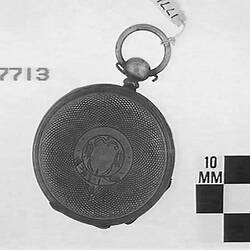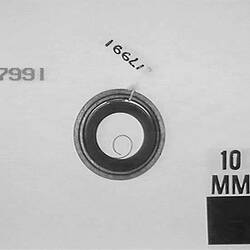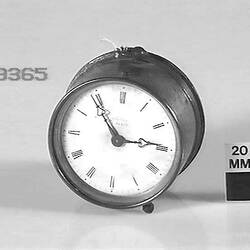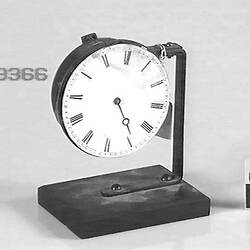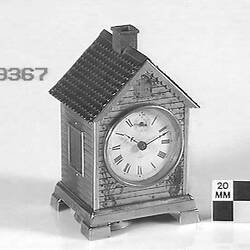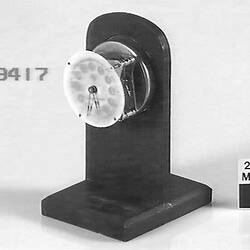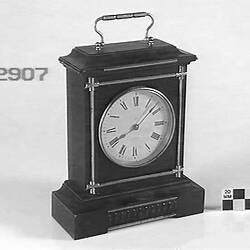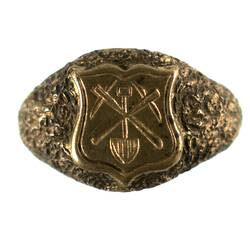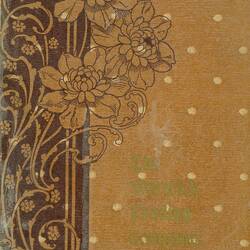James Michael Searle was born in Canning Street, Carlton, on 4th November 1861. His parents were typical goldrush era immigrants. His father, Edward William Searle, described himself on the birth certificate as a labourer, aged 30, born in Dublin, Ireland. He appears to have arrived in Victoria in late 1852 at the height of the initial goldrush, and according to family members possibly spent a period on the Bendigo goldfields, before settling in Melbourne. James' mother, Honora Purcell, was born in Tipperary, Ireland. She had arrived in Melbourne in May 1853, having left Birkenhead migration depot, Liverpool, on the ship Derry Castle, on 7th February, travelling with two sisters. They were part of a group of 250 single women, principally from Ireland; forming the bulk of a consignment of 360 Government assisted emigrants. Edward and Honora married at Carlton in 1856 and settled initially in Collingwood, where three children were born Edward William (1857), Richard (1858) and William Nicholas (1860), only the second of whom survived as an older sibling by the time James was born.
Prior to James' birth, the family had moved to Carlton, where James' parents would spend the rest of their lives. Four further siblings would follow: Mary Eliza (1864), Annie (1866), Nicholas (1869) and Michael John (1873). According to family descendants, Edward Searle worked as a grave digger at the Melbourne General Cemetery in Carlton, although on James' death certificate his profession is listed as "Gardener".
Given the family's strong Catholic background, it is likely that James Searle was educated at one of the local parish Catholic schools - possibly either the Sacred Heart School in Rathdowne Street, Carlton, or the St Brigid's School on Nicholson Street, North Fitzroy, the latter being a parish with which James maintained a connection later in life. As a boy he appears to have taken a strong interest in both the natural world and all things scientific. After schooling he most likely completed an apprenticeship with one of Melbourne early watch and clock making firms, although the identity of the firm he was indentured to is unknown at this stage. "Watch Maker" was the occupation listed on his death certificate and it was a trade that he would fall back on at intervals throughout his life. At this time an apprentice watchmaker was trained in technical aspects relating to the manufacture and assembly of components for clocks and watches, although in many cases they would have been working in the repair of imported timepieces rather than local manufacture. The trade at this time in some firms also encompassed the manufacture and repair of various types of scientific instruments and equipment - including optical instruments such as microscopes and telescopes, and in a few cases businesses also extended into the manufacture of early electrical apparatus such as telegraph instruments and electric dynamos or motors, as there was as yet no defined trade of electrical engineer. With the Working Men's College (now RMIT University) not established until 1887, there were few other avenues available to a young boy with a practical interest in things scientific and mechanical in Melbourne at the time that James Searle completed his education and training. The University of Melbourne offered a civil engineering course for a small cohort of more academically-minded students who had completed matriculation, but there were no other tertiary technical schools or colleges in Melbourne at this time. Thus for young boys with interests like James Searle, the primary options were undertaking a mechanical engineering apprenticeship or an apprenticeship as a watchmaker and scientific instrument maker.
James Searle married Jessie Colk, at Carlton in 1885, and they had seven children born in Collingwood and Carlton - Annie May (1885; later Mrs. T. Healy), Edward William (1887), George Lawrence (1889), Leslie James (1892-1983), Francis Stanislaus (1895-1936), William Joseph (1898-1952), Jessie Carmal (1900; later Mrs. W. Dowling).
In July 1885, James Searle was elected as a member of the Field Naturalists Club of Victoria (FNCV), and he became a regular attendee at the organisation's monthly meetings in the rooms of the Royal Society, on the corner of Victoria Parade and Exhibition Street. His interests during this period appear to have been diverse and eclectic judging by the variety of natural history specimens he exhibited at FVCV meetings, such as "fish from Alphington, &c." (Feb 1887); "three snakes" (Oct 1887); "beetles, &c., from Alphington and Studley-park" (Feb 1888); "coleoptera, &c., collected since last meeting" (Mar 1888); "five species of land shells" (Aug 1888); "fungi, lichens, &c." (Sep 1888); "lepidoptera, &c, collected since last meeting" (Nov 1888); "orchid in flower (Eriochilus autumnalis)" (Apr 1889); "a number of live birds; also snakes, &c., in spirits" (May 1889); "a five legged frog from Yarrawonga" (Feb 1889); "insects collected at Tooradin" (Nov 1889); "different stages of butterfly, Jalmenus evagorus" (Feb 1890); "tin ore from Tasmania, Barrier Ranges, New South Wales, and India, also lignite from pump works, Studley-park"; and, "lizards, spiders and insects taken on the Yarra Falls Excursion and a snake from Western Australia" (Mar 1891). Through the FNCV, Searle developed friendships and associations with leading members of Melbourne's amateur and professional scientific community, including Baron Von Mueller, Professor Baldwin Spencer and A.J. Campbell. Searle became a regular visitor at the old Natural History Museum of Victoria, established on Russell Street in 1898, and is recorded as the donor or collector or over 100 specimens in Museum Victoria's natural history collections in disciplines ranging from entomology, ichthyology, invertebrates and herpetology to mammalogy, ornithology and mineralogy, received between the 1880s and 1920s.
During the 1880s, Searle developed an interest in photography both taking his own photographs in the field and mastering the art of working in a darkroom to develop and print photographs and transform photographic images into magic lantern slides. By the early 1890s he was making regular appearances as a magic lantern projectionist at FNCV meetings presenting illustrations to accompany talks by luminaries of the Melbourne scientific world - such as Professor Baldwin Spencer's talk on "A Trip to Queensland in Search of Ceratodus " (1892); Mr Ernest Anderson, on "Notes on Some Victorian Lepidoptera (1892)"; D. Best's "Expedition to Halls Gap in the Grampians" (1892); Messrs. K. Anderson and P. Spry, on "Victorian Butterflies" (1893); Mr. A. J. Campbell's "Pictorial Reminiscences of the Islands of Bass's Strait" (1894); and Messrs. H.P. C. Ashworth and D. Le Souef, on "Albatross Island and the Hunter Group", following their expedition to the Bass Strait Islands (1895). Searle also participated in a number of excursions with members of the FNCV and was the entrusted with being the Club's official photographer on their expedition to Wilson's Promontory in 1905, later making slides illustrating the trip.
By 1888, James Searle has established his own business as a watchmaker at 349 Hoddle Street, Collingwood, but in the early 1890s, his business began to take a new direction. In the 1894 edition of the Sands & McDougall Directory, James Searle listed himself for the first time under the new categories of 'lantern slide manufacturers' and 'limelight artist and mechanists' describing his business as 'the only practical manufacturer of limelight apparatus in Australia; supplies limelight for tableaux, illustrated lectures etc. 15,000 slides to select from; compressed oxygen for all purposes.'. An alternate entry under the address of 252 Rathdowne Street, Carlton, offered 'lime-light furnished for dramatic performances, every requisite for the art of projection on sale or hire'. In subsequent years Searle would add additional limelight services to his directory listings including 'garden parties', 'tableaux vivants' and 'lectures illustrated'.
Limelight technology was first developed in the 1820s, when it was discovered that heating calcium oxide or quicklime (CaO) with a hot flame generated by burning pressured hydrogen and oxygen gases in a blow torch created an intense white-blue light through the combined processes of thermos-luminescence and chemi-luminescence. Harnessed in a lamp with a suitable reflector and lens, limelight was used as an early form of theatrical lighting and during the late 19th century was also applied to projecting magic lantern slides and moving picture shows in large public auditoriums and outdoor theatres. Setting up and operating limelight apparatus was a highly skilled and technical undertaking due to the ever present danger of fire or explosion.
By 1895, Searle had established separate commercial premises in the city at 23 Union Lane, off 288 Little Collins Street, three doors from the famous Coles Book Arcade. There he also offered services as a watchmaker alongside the business of a limelight artist and machinist. The Rathdowne Street premises in Carlton appear to have probably been a private residence, although it may also have had a shop front. Newspaper advertisements during the late 1890s also list other items for sale such as high-powered binocular microscopes, with numerous accessories, and electrical apparatus. In 1900, James Searle changed both his business and residential addresses, relocating the business premises to rooms on the third floor of the Glen Buildings, 274 Collins Street, Melbourne, close to the Block Arcade. The building was named after the firm W.H. Glen & Co., whose large music and musical instrument store was situated on the ground floor. Here Searle listed his business as 'watchmaker, electrical and scientific instrument maker'. His residential address was relocated at the same time to 259 Drummond Street, Carlton.
In 1901 the Victorian Agriculture Department commissioned James Searle to devise a 'limelight outfit and special lantern' for Mr Du Bois, director of the Rutherglen Viticultural College, for his lecturing tours around the country. Du Bois 'was naturally anxious that there should be but few parts liable to loss, and none to derangement.' Compactness and durability were other qualities required for this travelling teaching resource. The Scientific Australian reported that Searle:
"accomplished this problem in a most successful manner. The whole appliance weighs between thirty and forty pounds, and should be of invaluable assistance, not only to Mr. Du Bois, but also to those to whom he speaks."
In 1907, Mr. J. Searle, scientific instrument maker, of Collins Street, was reported to have invented an apparatus - called "the ringer" a device designed to test the dryness of wool, and thus show whether sheep were fit for shearing. A trial of the invention was made at the premises of Messrs. John Sanderson & Co. in the presence of a number of representatives of the wool growing industry and was favourably received; however, it is not recorded whether the device was subsequently adopted to any degree.
By 1913, Searle's business was described by advertisement in the Scientific Australian as: 'Watchmaker and scientific instrument maker. Manufacturer of every description of physical apparatus for school and experimental work. Limelights, lanterns, slides and every requisite for the Art of Projection.'. Four the next four years he advertised in the University of Melbourne Calendar as: 'Manufacturer of every description of physical apparatus for school and experimental work. Microscopes and microscopical sundries. Repairs a speciality.'. Searle would maintain his business premises at 274 Collins Street until 1929, although in later years the name of the building was changed to 'Australia House'. By the start of the First World War, Searle's residential address had moved to 942 Lygon Street, Carlton, where his 87 year old father was living with the family when he died on 2 January 1916. By the early 1930s, at almost 70 years age, James Searle had begun to wind back his business, moving to smaller premises at 4 Queens Walk, Melbourne, in the building at the corner of Collins and Swanston Streets, opposite the Town Hall. In 1932 he published a short article in The Age, in which he described how 'anyone who can use a soldering bit' could 'easily and quickly' make a toy 'Yo-Yo' from the lids of two tin containers. The article described how Mr. J. Searle, of 4 Queen's-walk, 'sometimes takes a few minutes off his work of making scientific apparatus to think out simple amusing articles'. Through the 1930s he was listed in the Sands & McDougall Directories as a 'watchmaker', although later accounts suggest he continued during these years to be engaged largely in "the repair of scientific instruments and timepieces". He maintained the Queen's Walk address until the outbreak of World War II.
Until the 1920s, James Searle continued to make regular appearances as the 'lanternist' presenting illustrated slide shows to accompany a variety of public talks and lectures on a variety of subjects from natural history to world travel and religious matters. One of the last events at which his services were mentioned was the Centenary Von Mueller Lecture held in 1925. As more modern slide projectors equipped with specially designed incandescent electric light globes became more readily available, it is understandable that the services of a specialist projectionist were less in demand.
Searle also continued his active involvement with the Field Naturalists Club throughout the remainder of his life, serving as President of the organisation during the year 1924-25. Although he maintained a wide general knowledge across the fields of botany and zoology, in later years he restricted his activities chiefly to "a study of cryptogamic flora and microscopic life in general", specialising in Entomostraca and, inspired by G. O. Sars, he described new species of Copepoda and Cladocera, publishing his work in three papers that appeared in the Victorian Naturalist between January 1911 and February 1914. He continued to maintain an active involvement in the FNCV fieldtrips and excursions until suffering an injury to his hip, but his interest in all aspects of nature study remained. In July 1919, James Searle, read a paper entitled "Gleanings of a City Naturalist" to a FNCV meeting, presenting a charming account of how a city dweller 'may indulge a taste for natural history even if he is "cribb'd, cabin' d, and confin'd" in a city office.' The paper dealt with the various insects, &c., observed over several months through two small north-facing windows of his 15 feet by 12 feet office on the third floor of 274 Collins Street, Melbourne, and when presented was 'illustrated by a series of lantern slides, among which were many excellent micro-photographs of insect anatomy.'
Following the re-opening of the Industrial & Technological Museum in 1915, next to the Public Library, James Searle also became a regular donor to Museum Victoria's technology collections, depositing some 125 items over the period of 22 years between 6 Apr 1916 and 22 Feb 1938. The items, mainly received singly or in small batches, perhaps reflect the ongoing process of Searle gradually cleaning out his rooms and rationalising his own collection of bits and pieces acquired during a lifetime working in the field of scientific instruments and photography. They range from horological items (including some timepieces of Searle's own design and manufacture), photographic equipment, and components of limelight apparatus, to phonographic equipment, an early Daguerreotype photograph, firearms, kerosene and incandescent lamps, candlesticks, wax matches and some early scientific equipment such as Leyden Jars, a Wimshurst electrostatic generator and Leeuwenhoek microscope.
After living for a period at 266 Clarke Street, Northcote, in the early 1940s Searle 'retired' to a country residence at Narbethong. He died at nearby Marysville on 9th September 1947, from a combination of his hip injury, 'senility' and 'myocardial failure', having suffered from the latter ailment for the last 50 years of his 85 year life. In an obituary published in the Victorian Naturalist, he was remembered as "one of its oldest, most loyal and helpful members" of the Field Naturalists Club, and a man of always "genial and helpful character".
One of James Searle's sons, Edward William Searle (1887-1955) became a noted Australian professional photographer, associated during parts of his career with the firms Hall &? Co. and Grace Bros. in Sydney, and J.W. Beattie, in Hobart, during 1911-1915.
More Information
-
Keywords
-
Localities
Melbourne, Victoria, Australia, Carlton, Victoria, Australia
-
Authors
-
Contributors
-
Article types
